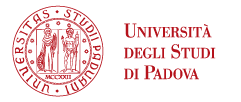Asteroid dust found within the dinosaur-killing crater

Thanks to iridium, an international team, to which Dr. Honami Sato from the Department of Geosciences collaborated, obtained the “indisputable evidence” of the connection between the impact of a 12 km large asteroid and the mass extinction that took place around 66 Million years ago
Uncovering the final piece of evidence that ties the global mass extinction to the 12-kilometer asteroid impact that occurred around 66 Million years ago, at the end of the Cretaceous period. This is the main outcome of a research project recently published in Science Advances stemming from the collaboration of an international team of researchers led by the Vrije Universiteit Brussel, to which also Dr. Honami Sato from the Department of Geosciences collaborated.
The project originated from the need of tracing back the 66 Million-year-old global asteroid dust layers, originally found near Gubbio, Italy, and Caravaca, Spain, to within the Chicxulub impact crater in the Yucatán Peninsula, in Mexico. To do this, the research group used iridium as a marker, a rare element in the Earth’s crust but with particularly high concentrations in meteorites and in this thin clay layer that marks the boundary between the Cretaceous and the Paleogene periods.
“We found the signature of the asteroid dust in a clay-rich interval in sediments just below limestone from the earliest Paleogene”, underlines Dr. Sato, “and to be sure we compared the extensive geochemical analyses from four independent laboratories”. The research team worked on several samples drilled directly from the peak ring of the crater, collected during the International Ocean Discovery Program (IODP) and the International Continental Scientific Drilling Program (ICDP) Expedition 364, which took place in 2016 and to which Dr. Sato took part.
This result will revitalize research on the Cretaceous-Paleogene mass extinction and, as Dr. Honami Sato remarks, will also have important consequences on future research, as it provides important insights on the mechanisms related to the impact of large meteorites on our planet and how the Chichxulub meteorite led to a global mass extinction.





